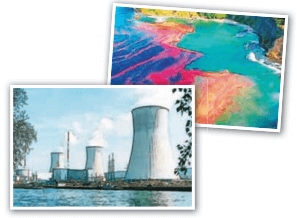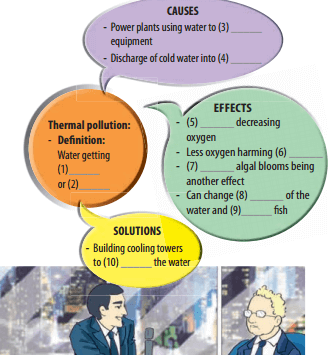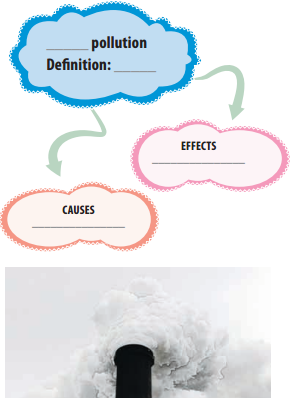Tiếng Anh lớp 8 unit 7 Skills 2
Tài liệu Soạn unit 7 lớp 8 Skills 2 dưới đây nằm trong bộ đề Soạn tiếng Anh lớp 8 chương trình mới theo lesson do VnDoc.com sưu tầm và đăng tải. Phần Skills 2 unit 7 Pollution SGK tiếng Anh lớp 8 sẽ giúp các em học sinh lớp 8 luyện tập hai kĩ năng là "Listening" (nghe) và "Writing" (viết) dựa vào từ vựng và cấu trúc ngữ pháp đã học theo chủ đề "Pollution" (ô nhiễm).
Xem thêm: Soạn tiếng Anh lớp 8 unit 7 Pollution đầy đủ nhất
Soạn tiếng Anh 8 unit 7 Skills 2
I. Tiếng Anh 8 unit 7 Skills 2 trang 79, 80 Global success
Listening
1. Work in groups. Make a list of some activities that cause water pollution. Làm việc nhóm. Liệt kê một số hoạt động gây ô nhiễm nguồn nước.
Example:
- throwing rubbish into rivers and lakes
Gợi ý
Industry, agriculture and livestock farming.
Rubbish and water dumping.
Maritime traffic
Oil spills
2. Listen to a talk and choose the correct word to complete each sentence. Nghe một bài nói và chọn từ đúng để hoàn thành mỗi câu.
Click để nghe
1. Polluted water is unsafe for drinking / cooking and for other uses.
2. Sometimes toxic substances flow into rivers from factories / hospitals.
3. Water pollution has a dangerous / harmful effect on our life.
4. We couldn't / shouldn't throw litter into rivers and lakes.
Đáp án
1 - drinking
2 - factories
3 - harmful
4 - shouldn’t
3. Listen again and give short answers to the following questions. Use no more than THREE words. Nghe lại và đưa ra câu trả lời ngắn cho những câu hỏi sau. Sử dụng không quá BA từ.
Click để nghe
1. What is the listening text about?
2. How many sources of water pollution are there?
3. What are two common sources of drinking water?
4. What type of effect does water pollution have on our life?
5. What products can we use to reduce water pollution?
Đáp án
1 - Water pollution
2 - Two/ 2
3 - Rivers and lakes
4 - A harmful effect
5 - Green products
Writing
4. Work in pairs. Read the notice and match the headings (a - e) below with the numbers (1-5). Làm việc theo cặp. Đọc thông báo và nối các tiêu đề (a - e) bên dưới với các số (1-5).
Đáp án
1 - a. Name of institution or organisation (school, etc.)
2 - c. Date of writing the notice
3 - b. Body (date / time / duration / place, etc.)
4 - e. Contact details
5 - d. Author's name and signature
5. Write a notice for the Go Green Club leader to invite students to attend a lecture on water pollution. Use the following details. Viết thông báo cho trưởng câu lạc bộ Go Green mời sinh viên tham dự buổi diễn thuyết về ô nhiễm nguồn nước. Sử dụng các chi tiết sau.
Time: 2 p.m. - 4 p.m.,6 March
Place: School Grand Hall
Topic: Water pollution
>> Tham khảo thêm văn mẫu tại: Write a notice for the Go Green Club leader to invite students to attend a lecture on water pollution
Xem chi tiết tại: Giải SGK tiếng Anh 8 unit 7 Environmental protection Skills 2 trang 79 80
II. Soạn Skills 2 Unit 7 lớp 8 Pollution
Mục tiêu bài học
1. Aims
By the end of the lesson, sts will be able to:
- Listen to a conversation on TV between a reporter and an environmentalist about thermal pollution.
- Write an article about causes and effects of a type of pollution in their area.
2. Objectives
- Vocabulary: cause and effect of thermal pollution
- Grammar: conjunctions
- Skills: listening, writing
Listening
1. Describe what you see in the pictures and talk about relationship between them. Miêu tả những gì bạn xem trong hình và nói về mối quan hệ giữa chúng.

Bài nghe:
Đáp án:
- The first picture shows an algal bloom in coastal seawater.
- The second picture shows the cooling towers from a power station.
- They are both related to thermal pollution.
Hướng dẫn dịch:
- Bức tranh thứ nhất cho thấy tảo nở hoa dày đặc trong nước biển ven bờ.
- Bức tranh tthứ hai cho thấy các tháp làm mát từ một trạm phát điện.
- Cả hai đều liên quan đến ô nhiễm nhiệt.
2. Listen to part of a conversation on TV between a reporter and an environmentalist about thermal pollution. Complete the diagram. Use more than three words for each blank. Nghe phần bài đàm thoại trên ti vi giữa một phát thành viên và nhà môi trường học về ô nhiễm nhiệt. Hoàn thành bảng biểu. Sử dụng không hơn 3 từ cho mỗi chỗ trống.
Bài nghe:

Đáp án:
| (1) hotter | (2) cooler | (3) cool | (4) warm rivers | (5) warm water |
| ((6) fish populations | (7) harmful | (8) colour | (9) poison | (10) cool down |
Hướng dẫn dịch:
Ô nhiễm nhiệt
Định nghĩa: nước nóng hơn hoặc mát hơn
Nguyên nhân:
- Nhà máy nhiệt điện sử dụng nước để làm mát thiết bị.
- Xả nước lạnh vào những dòng sông.
Hậu quả:
- Nước nóng hơn làm giảm lượng ôxi.
- Ít ôxi làm hại đàn cá.
- Sự phát triển của những tảo gây hại cũng là hậu quả khác.
- Có thể thay đổi màu sắc của nước và gây ngộ độc cá.
Giải pháp:
- Xây dựng những tháp làm mát để làm nguội nước.
Nội dung bài nghe:
Reporter: Does thermal pollution mean that bodies of water get hotter, Mr Nam?
Mr Nam: Not always. Sometimes the water becomes colder, and that’s also thermal pollution means a change in the water temperature.
Reporter: That’s interesting! What causes
Mr Nam: Power station are one factor. They use water in the nearby lakes or rivers to cool their equipment, which heats up the water. Then they dump the hot water back into its source.
Reporter: Are there any other causes?
Mr Nam: Yes. Thermal pollution may also happen due to the discharge of cold water from reservoirs into warm rivers.
Reporter: Thermal pollution can have dramatic effects. Right?
Mr Nam: Certainly. Most aquatic creatures need a certain temperature to survive. Warmer water has less oxygen in it, and this can harm fish populations. Besides, warmer water can cause harmful algalblooms. This can change the colour of the water like in the first picture and, more seriously, the algea poisons the fish.
Reporter: What can we do, Mr Nam?
Mr Nam: In many places, they build cooling towers like in the second picture to cool down the water from power stations.
Reporter: Anything else we can do?…
Hướng dẫn dịch bài nghe:
Phóng viên: Ô nhiễm nhiệt có phải làm các nguồn nước nóng lên không, ông Nam?
Mr Nam: Không hoàn toàn đúng. Đôi khi nước trở nên lạnh hơn, và điều đó cũng làm ô nhiễm nhiệt nghĩa là thay đổi nhiệt độ nước.
Phóng viên: Thật thú vị! Nguyên nhân là gì vậy?
Mr Nam: Nhà máy điện là một yếu tố. Họ sử dụng nước ở các hồ hoặc sông gần đó để làm mát thiết bị của họ, làm nóng nước. Sau đó, họ đổ nước nóng trở lại nguồn của nó.
Phóng viên: Có nguyên nhân nào khác không?
Ông Nam: Vâng. Ô nhiễm nhiệt cũng có thể xảy ra do việc xả nước lạnh từ các hồ chứa vào các con sông ấm.
Phóng viên: Ô nhiễm nhiệt có thể có tác động mạnh mẽ. Có đúng không?
Ông Nam: Chắc chắn rồi. Hầu hết các sinh vật thủy sinh cần một nhiệt độ nhất định để tồn tại. Nước ấm hơn có ít ôxy hơn, và điều này có thể gây hại cho quần thể cá. Bên cạnh đó, nước ấm hơn có thể gây ra tảo nở hoa có hại. Điều này có thể thay đổi màu sắc của nước như trong bức hình đầu tiên và, nghiêm trọng hơn, tảo đầu độc cá.
Phóng viên: Chúng ta có thể làm gì, ông Nam?
Ông Nam: Ở nhiều nơi, họ xây dựng các tháp làm mát như trong bức hình thứ hai để làm mát nước từ các nhà máy điện.
Phóng viên: Chúng ta có thể làm bất cứ điều gì khác không? ...
Writing
3. Work in pairs. Discuss the causes and effects of one type of pollution in your area. Make notes in the diagram. Làm theo cặp. Thảo luận những nguyên nhân và hậu quả của một trong những loại ô nhiễm trong khu vực em. Ghi chú vào biểu đồ.

Đáp án:
Các em học sinh tự thảo luận.
Gợi ý:
Water pollution
Definition: Water pollution is the phenomenon of water areas such as rivers, lakes, sea, underground water... being contaminated by human activities that an harm humans and the life of organisms in nature.
Cause: substances contained in pesticides and herbicides, industrial wastes, domestic waste
Effect:
- Causing of cholera, skin cancer, typhoid and polio
- Causing great losses to production and business sectors and aquaculture households.
- Killing fish and the aquatic animals
- Causing shortage of fresh water
Hoặc:
Air pollution
Definition: Air pollution occurs when the air contains gases, dust, fumes or odour in harmful amounts.
Cause: industrial waste, exhaust from car and plane...
Effect: causing diseases, death to humans, damage to other living organisms such as animals and food crops, or the natural or built environment.
Hướng dẫn dịch
Ô nhiễm nguồn nước
Khái niệm: Ô nhiễm nguồn nước là hiện tượng các vùng nước như sông, hồ, biển, nước dưới đất ... bị ô nhiễm do các hoạt động của con người gây hại cho con người và đời sống của các sinh vật trong tự nhiên.
Nguyên nhân: chất có trong thuốc trừ sâu và thuốc diệt cỏ, chất thải công nghiệp, chất thải sinh hoạt
Hiệu quả
- Gây bệnh tả, ung thư da, thương hàn và bại liệt
- Gây thiệt hại lớn cho các ngành sản xuất kinh doanh và các hộ nuôi trồng thủy sản.
- Giết cá và động vật sống dưới nước
- Gây thiếu nước ngọt
Hoặc
Ô nhiễm không khí
Định nghĩa: Ô nhiễm không khí xảy ra khi không khí có chứa các chất khí, bụi, khói hoặc mùi ở mức độ có hại.
Nguyên nhân: chất thải công nghiệp, khí thải từ ô tô và máy bay ...
Hiệu quả: gây bệnh tật, tử vong cho con người, thiệt hại cho các sinh vật sống khác như động vật và cây lương thực, hoặc môi trường tự nhiên hoặc xây dựng.
4. Imagine that you two are writing an article for the local newspaper about a type of pollution in your area. One of you writes about the causes and the other writes about the effects of pollution type you have just discussed in 3. Tưởng tượng rằng em đang viết một bài báo cho một tờ báo địa phương về một loại ô nhiễm trong khu vực em. Một trong các bạn viết về nguyên nhân và những người khác viết về hậu quả, sau đó thảo luận.
Đáp án mang tính chất tham khảo, các em học sinh tự sáng tạo theo ý tưởng của mình.
Soil pollution happens when human activities destroy the earth’s surface.
- Causes: pesticides, herbicides, chemical industrial watse, deforestation...
- Effects: soil pollution, soil erosions, the upper layer of soil is damaged, effects on wild-life... (Tác động: ô nhiễm đất, sói mòn đất, lớp đất mặt bị hư, tác động lên động vật hoang dã...)
- Solutions: Fine heavily people who cut the forest and those who realease chemicals waste into the ground. (Giải pháp: Phạt nặng người chặt phá rừng và người thải rác hóa học vào đất)
5. Read each other’s work and put them to make a complete article. Đọc bài của mỗi người và đặt chúng cùng nhau để làm bài hoàn chỉnh.
Gợi ý
Water pollution is one of the most dangerous pollution problem that we have to face with. Air pollution is the mixing of any harmful substances to the atmosphere fresh air causing a huge level of damages, human health disorders, reducing the quality of life, etc. Air pollution is increasing day by day because of the increasing number of industries. The polluted air we breathe every moment causing lungs disorders and even lung cancer thus affecting the health of other body organs. Air pollution is continuously damaging the whole ecological system and affecting the lives of plants and animals as well. It has reached the critical stage and affecting the whole atmosphere by allowing more harmful radiations from the sun to the earth. In conclusion, water pollution is an alarming problem that needs to be solved as soon as possible. The sooner we solve it, the healthier we are.
* Xem thêm bài văn mẫu tiếng Anh tại:
- Write about one type of pollution in your area
- Viết về ô nhiễm tiếng ồn bằng tiếng Anh
- Viết về ô nhiễm nước bằng tiếng Anh
- Viết đoạn văn về ô nhiễm không khí bằng tiếng Anh
Trên đây là Soạn Skills 2 trang 13 Unit 7 SGK tiếng Anh 8 mới. Mời bạn đọc tham khảo thêm nhiều tài liệu ôn tập Tiếng Anh lớp 8 cả năm khác như: Để học tốt Tiếng Anh lớp 8, Đề thi học kì 1 lớp 8, Đề thi học kì 2 lớp 8, Bài tập Tiếng Anh lớp 8 theo từng Unit trực tuyến,... được cập nhật liên tục trên VnDoc.com.









